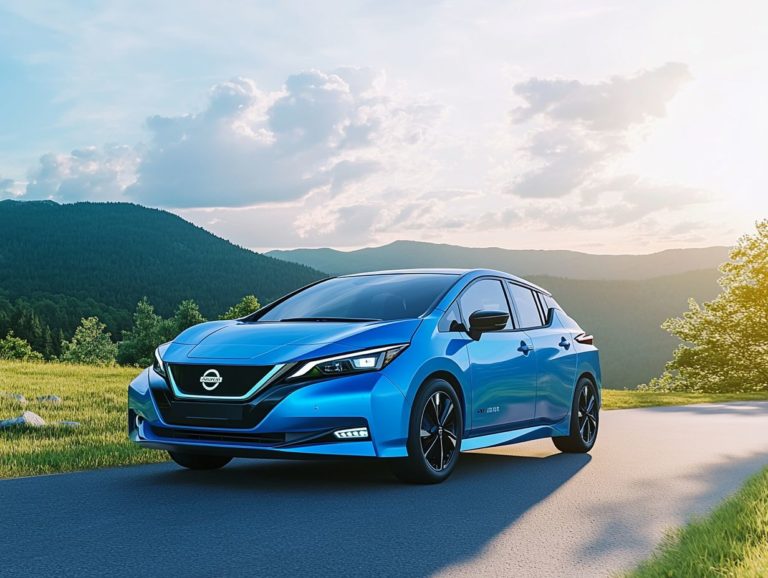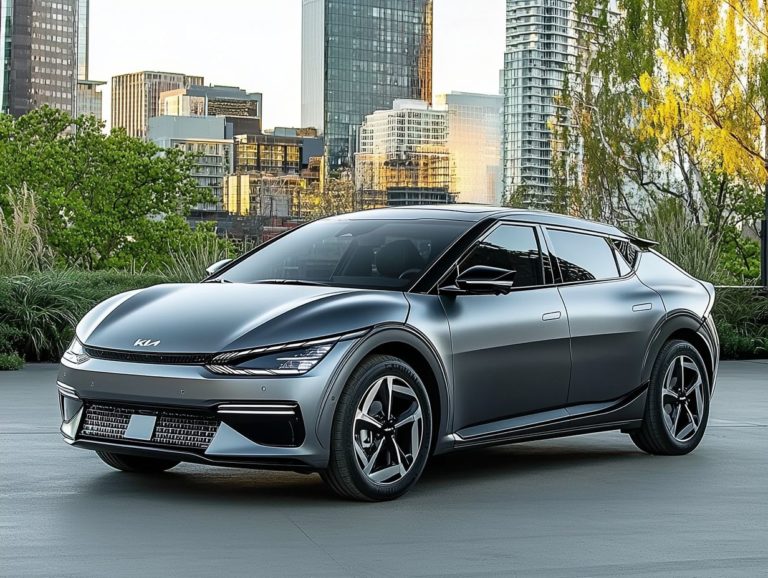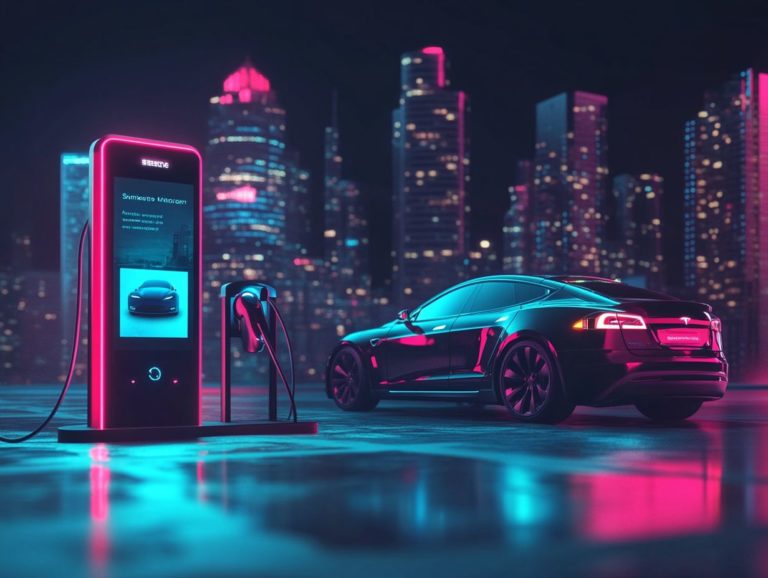Charging at Home: What You Need to Know
Charging your electric vehicle at home presents an unparalleled blend of convenience, cost savings, and energy efficiency.
As electric vehicles gain traction, understanding how to establish a home charging station is essential for you as an owner.
This article delves into the many benefits of home charging, the types of vehicles compatible with these stations, and the practical steps necessary for installation.
Key factors to consider include not only equipment costs but also local regulations, along with alternative charging options tailored to your specific needs.
Elevate your charging experience to new heights!
Contents
- Key Takeaways:
- Benefits of Charging at Home
- Types of Vehicles that Can Be Charged at Home
- Setting Up a Home Charging Station
- Factors to Consider Before Installing a Home Charging Station
- Alternative Charging Options for Home
- Frequently Asked Questions
- What are the benefits of charging at home?
- Do I need any special equipment to charge at home?
- How much does it cost to install a charging station at home?
- How long does it take to charge an EV at home?
- Can I use a regular outlet to charge my EV at home?
- Are there any safety precautions I should take when charging at home?
Key Takeaways:
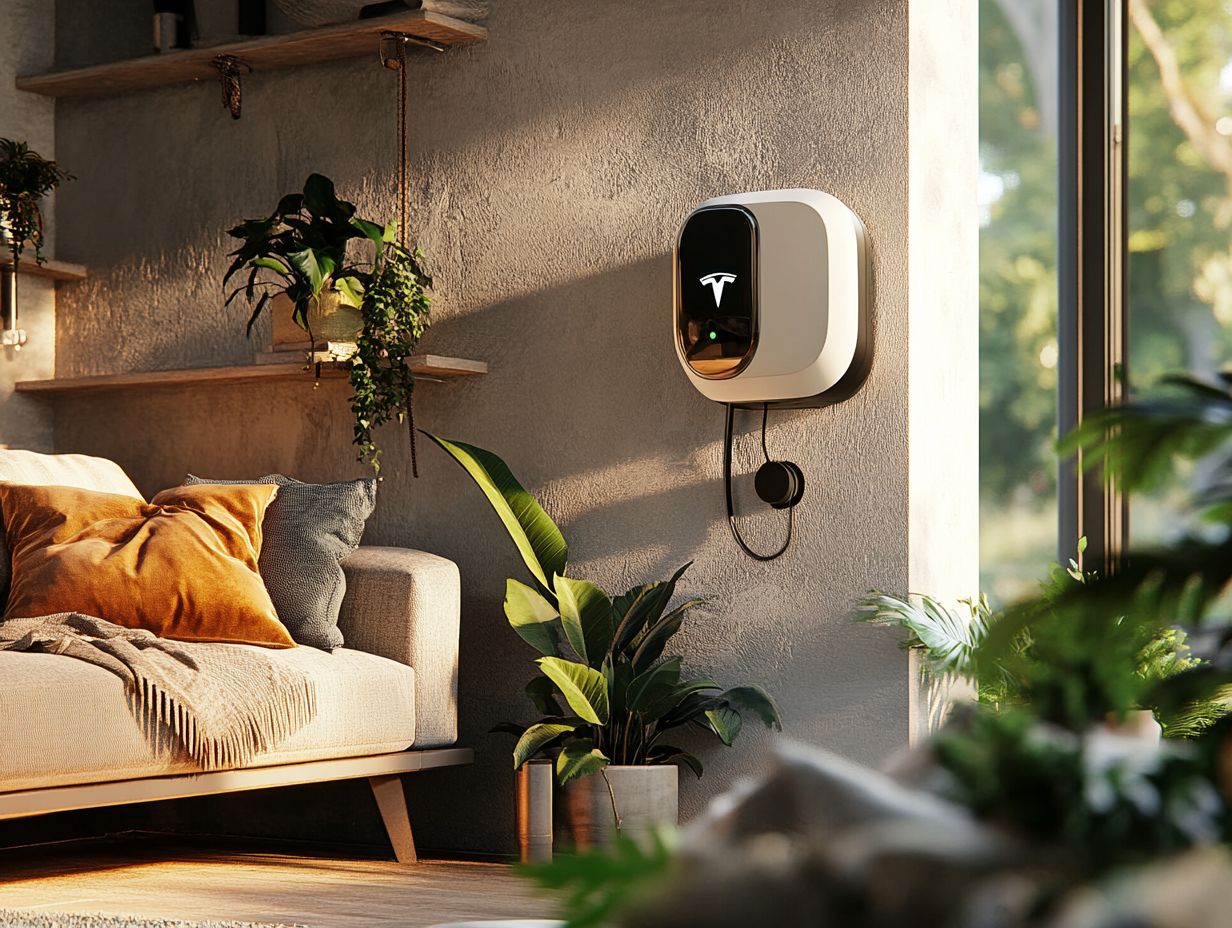
- Charging your electric vehicle at home offers convenience and cost savings compared to using public charging stations.
- Most types of electric vehicles can be charged at home, including plug-in hybrids and all-electric models.
- Before installing a home charging station, consider the power capacity of your home and any building codes or permits required for installation.
Benefits of Charging at Home
Charging at home presents a multitude of advantages that significantly enhance the convenience and efficiency of owning electric vehicles (EVs).
This strategy makes it easier to keep your vehicle charged and alleviates the common frustrations associated with public charging stations, which can often be overcrowded or temporarily out of service.
As an EV owner, you can enjoy the cost-saving benefits of home charging, especially when you take advantage of time-of-use tariffs to charge during off-peak hours.
Choosing home charging also aligns with a commitment to a greener planet, as it frequently allows for the integration of renewable energy sources like solar power.
Advanced technologies such as in-home energy management systems further enhance this experience, optimizing your charging times based on energy availability and overall demand. This means you can maximize your savings while positively contributing to the environment.
This perfect mix of convenience, savings, and being eco-friendly is why electric car lovers are so excited about home charging.
Types of Vehicles that Can Be Charged at Home
A diverse array of electric vehicles (EVs) can be conveniently charged right at home, making this option highly appealing for you as a driver.
Thanks to advancements in charging technology, you now have more choices than ever before. Take the Ford Mustang Mach-E, for example; it combines a sleek design with fast-charging capabilities, allowing you to replenish its battery efficiently in no time.
Then there s the Audi e-tron, which impresses with sophisticated onboard chargers that enable seamless home installations.
Manufacturers like Hyundai are also stepping up, introducing models such as the Kona Electric, equipped with versatile charging options that cater to various home setups.
As home charging stations become increasingly common, you re enabled to explore a growing selection of electric vehicles, each offering distinct features tailored to fit your unique lifestyle.
Setting Up a Home Charging Station
Setting up a home charging station for your electric vehicle can significantly enhance your EV ownership experience, merging unparalleled convenience with efficiency.
The installation process begins with selecting the right EV charger that aligns with your car’s charging speed and power output. You should also assess your home s existing electrical circuit to ensure compatibility.
Though installation costs may vary depending on the complexity of the setup, investing in a dedicated home charging system typically pays dividends over time, offering reduced charging costs and a more streamlined charging process.
Understanding how the charging station works can make your transition to electric vehicle ownership smooth.
Equipment and Installation Costs
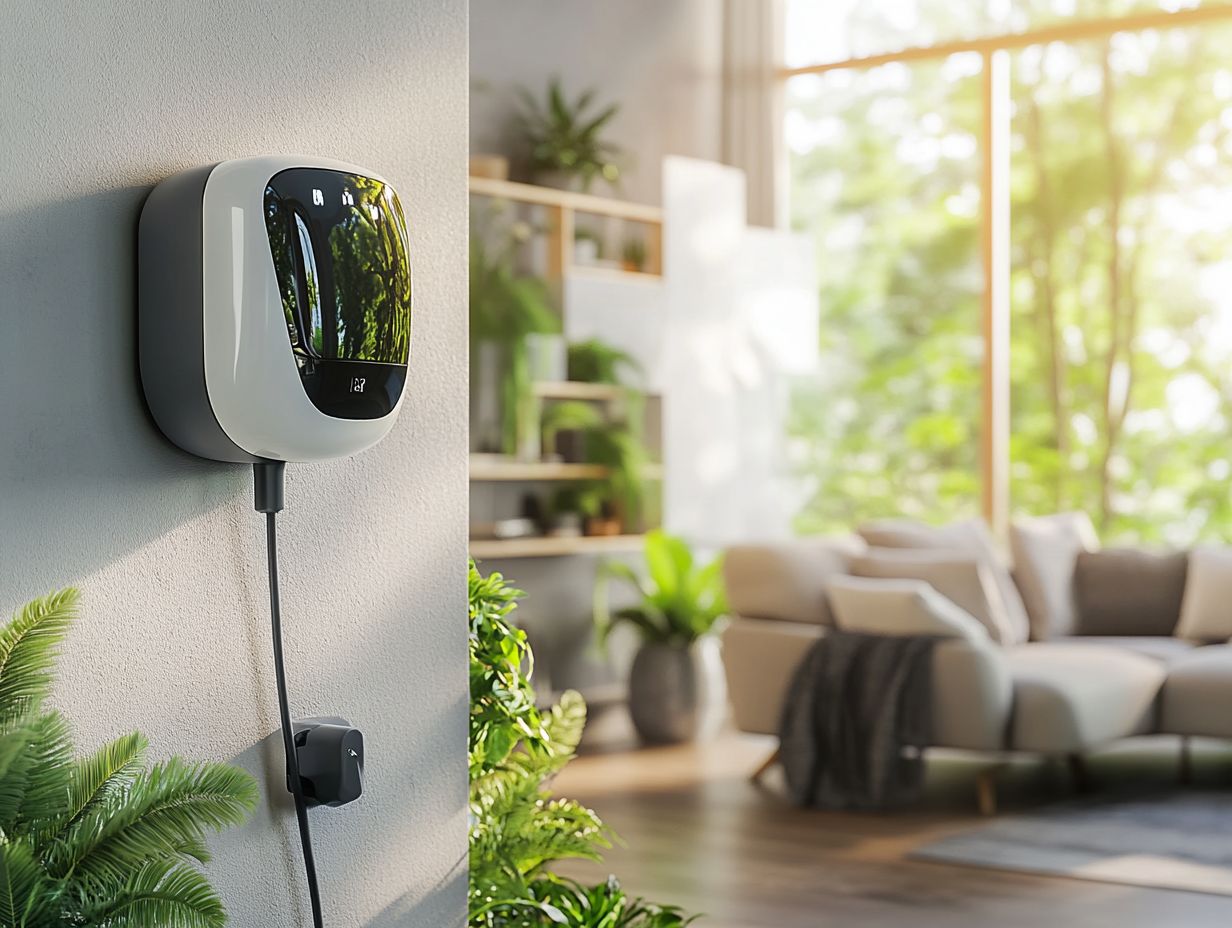
When you re planning to install a home charging station, it s essential to consider both the necessary equipment and the installation costs involved. You ll find a variety of EV chargers on the market, from Level 1 chargers that provide slower charging speeds to Level 2 chargers that offer significantly faster power output, enabling your electric vehicle to recharge efficiently. The total installation costs can vary widely based on the equipment you choose, any electrical upgrades needed, and labor. Typically, dedicated charging stations designed just for your home provide the best long-term value. By understanding these factors, you can make informed decisions that align perfectly with your electric vehicle charging needs.
Beyond Level 1 and Level 2 options, there are also DC fast chargers, which are perfect for quick top-ups during longer trips. Each charging type comes with its own price range; while Level 1 chargers might be quite affordable, Level 2 chargers and DC fast chargers often require a larger upfront investment.
As you explore these options, it s crucial to consider not only the initial purchase price but also the installation expenses, which can fluctuate based on your location and the condition of your existing electrical infrastructure. Prioritizing compatibility with your specific electric vehicle model will further streamline your decision-making process, ensuring that your chosen solution effectively meets both your current and future needs.
Steps for Installing a Home Charging Station
Installing a home charging station can be a seamless endeavor when you follow a structured approach. Begin by assessing your home s electrical circuit to determine if it can handle the power output needed for an EV charger.
Next, choose an EV charger that aligns with your electric vehicle’s charging speed requirements, whether that s a Level 1 or Level 2 charger. Once you’ve secured the necessary equipment, arrange for a professional installation to ensure everything is compatible and safe, while keeping in mind any installation costs that may arise from electrical upgrades.
Familiarize yourself with the charging process to maximize efficiency and make your transition to home charging as smooth as possible. This step is crucial not only for maintaining your home s electrical safety but also for optimizing the performance of your charging station.
Don t hesitate to seek insights from fellow EV owners or consult online reviews about different charger models. Engaging a qualified electrician can provide invaluable guidance in selecting the best charger for your setup and addressing any circuit enhancements necessary to ensure compliance with local regulations.
After installation, make it a habit to use the station regularly and keep the user manual close at hand for troubleshooting any issues that might pop up. Staying informed about advancements in charging technology can significantly enhance your overall charging experience.
Factors to Consider Before Installing a Home Charging Station
Before you proceed with installing a home charging station for your electric vehicle, there are several crucial factors to consider for a successful setup.
First and foremost, assess the power capacity of your existing electrical circuit; it must support the charging speed and power output of the charger you select. Compatibility with your specific electric vehicle is equally important, as different models come with varying requirements that need to be addressed.
Investigate any potential building codes and permits to ensure compliance with local regulations. This diligence will pave the way for a smooth installation process, free from any legal complications.
Power Capacity and Compatibility
Understanding power capacity and compatibility is crucial for successfully installing your home charging station. Different EV chargers have varying power outputs, which directly impacts the charging speed of your electric vehicle. It s essential to ensure that your home s electrical circuit can accommodate the requirements of your chosen charger.
Compatibility with your electric vehicle is essential. Not all chargers suit every model, so check your vehicle’s specifications before purchasing.
The relationship between power output and charging time is vital. For instance, a charger with higher wattage can significantly cut down the time it takes to reach a full charge, which is a game changer for those with busy lifestyles.
Familiarizing yourself with the nuances of various charging standards like Level 1, Level 2, and DC fast charging can elevate your charging experience. Level 1 charging uses a standard outlet and is slower. Level 2 is faster and requires a dedicated outlet, while DC fast charging provides the quickest charge using specialized equipment.
Recognizing these factors not only optimizes your charging schedules but also enhances the overall lifespan and performance of your vehicle’s battery.
Building Codes and Permits
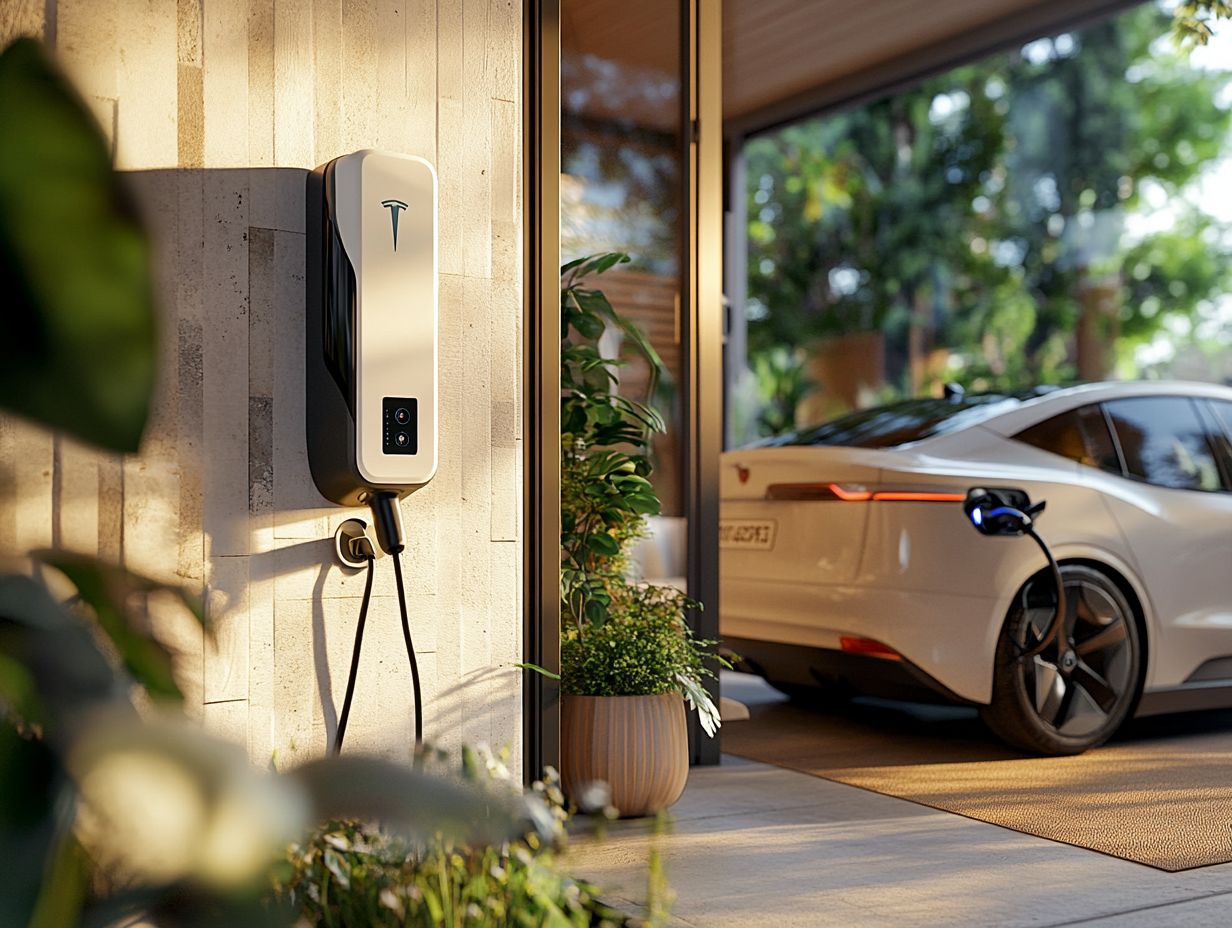
Navigating building codes and permits is a crucial step when planning the installation of your home charging station. Each region has its own set of regulations governing electrical installations. Complying with these codes is essential for ensuring both safety and legality.
Securing the necessary permits can influence your installation costs. Neglecting to follow local requirements could lead to fines or required adjustments after the fact. It’s wise to consult with local authorities or a licensed electrician to grasp the specific codes and permits needed for your charging solution.
In many jurisdictions, these regulations dictate not only where and how charging stations can be installed but also the technical standards that must be met. For example, certain areas may require specific electrical wiring, safety measures, or even inspections before your station can go live.
Researching local regulations will save you from surprise costs and frustrating delays. Following building codes not only keeps you compliant but also boosts your installation’s longevity and reliability, making it a sound investment in both safety and efficiency.
Alternative Charging Options for Home
Along with establishing a dedicated home charging station, you have a range of alternative charging options that can enhance your flexibility and convenience as an electric vehicle owner.
Public charging stations are increasingly accessible, offering you viable solutions while you’re away from home. However, it’s worth noting that charging costs can vary significantly compared to your home setup.
Another appealing option is leasing or renting a home charging station, particularly if you prefer not to commit to purchasing equipment outright. By exploring these alternatives, you can optimize both your charging habits and your overall expenses.
Using Public Charging Stations
Public charging stations present the perfect opportunity to recharge your electric vehicle while on the go. They offer a valuable alternative to home charging. These stations come in various charging speeds, with some providing rapid charging that can significantly restore battery life much faster than standard home chargers.
Keep in mind that charging costs at public stations can vary widely based on the network and location. This variation can ultimately affect your overall charging expenses. Understanding how to effectively leverage public charging can complement your home charging strategies, ensuring a seamless experience as you navigate the world of electric vehicles.
Many electric vehicle owners appreciate the convenience of having access to a range of charging stations, especially during long trips or when away from home. In addition to speed, these stations often provide vital information regarding availability, allowing you to plan your route more efficiently.
However, be prepared for potential longer wait times at busy stations, particularly in urban areas. This can lead to frustration when you re eager to recharge.
It’s also important to remember that not all public charging facilities accommodate every type of connector plug, which could limit access for some drivers. By weighing these pros and cons, you can make more informed decisions while navigating the charging landscape.
Leasing or Renting a Home Charging Station
Leasing or renting a home charging station offers a flexible and potentially cost-effective solution for your electric vehicle charging needs. By choosing to lease, you gain access to the latest EV charger technologies without the hefty upfront costs that come with purchasing equipment.
Renting provides a similar advantage, allowing you to test various charging solutions until you find the perfect fit for your electric vehicle. Both options can help you save money on charging, especially if you don t frequently use your EV or prefer to keep your options open.
The flexibility that leasing or renting provides means you can easily upgrade your equipment as newer, more efficient models hit the market. This adaptability helps you stay in sync with evolving technology and your personal preferences, ultimately enhancing your overall experience.
However, while these options can lighten your initial financial load, long-term commitments might lead to costs that exceed those of outright purchasing a charging station. Understanding the balance between immediate savings and future expenses is crucial as you weigh your options for your home charging setup.
Frequently Asked Questions
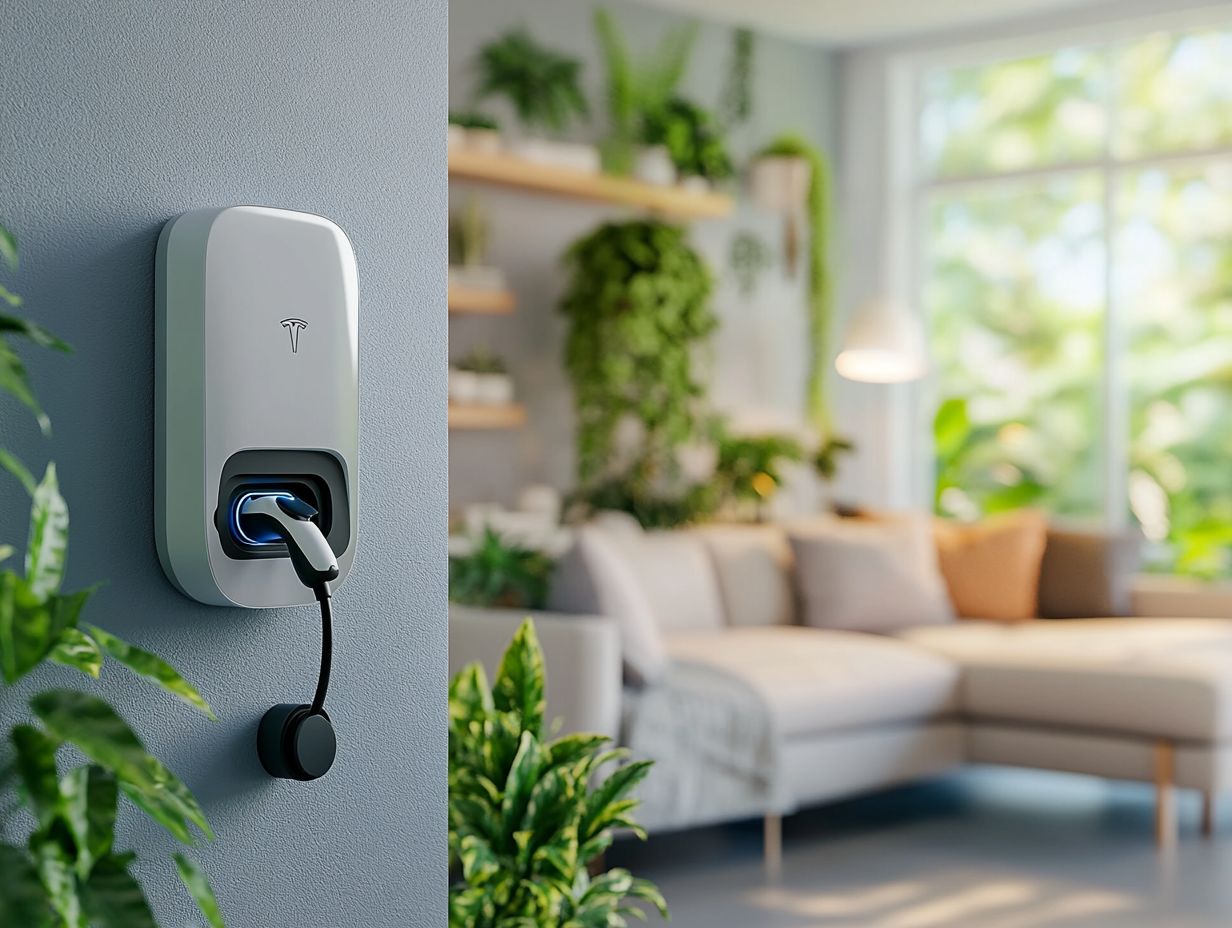
What are the benefits of charging at home?
Charging at home allows for convenience and ease. You can simply plug in your electric vehicle (EV) overnight and wake up to a fully charged car. Charging at home saves money in the long run compared to constantly relying on public charging stations. Additionally, it reduces your carbon footprint and supports a more sustainable form of transportation.
Do I need any special equipment to charge at home?
Yes, you will need a faster charger that requires a special outlet installed in your home. This typically involves a 240-volt outlet, similar to those used for electric clothes dryers. You may also need to upgrade your home’s electrical panel to accommodate the extra power needed for charging.
How much does it cost to install a charging station at home?
The cost of installing this faster charger varies, but on average, it ranges from $500 to $1200. This includes the cost of the equipment and installation by a licensed electrician. Some utility companies also offer rebates or incentives for installing a charging station at home.
How long does it take to charge an EV at home?
The time it takes to charge your EV at home depends on the size of your battery and the charging speed of your station. On average, it takes around 8-12 hours to fully charge an EV using a faster charger. This can vary, so it’s important to check your vehicle’s charging specifications.
Can I use a regular outlet to charge my EV at home?
No, using a regular outlet to charge your EV is not safe. These outlets can’t handle the power needed for EV charging and can be dangerous.
Instead, opt for a special charging station designed for electric vehicles. It’s the best way to ensure a safe and efficient charging experience.
Are there any safety precautions I should take when charging at home?
Yes, always follow the manufacturer’s instructions when charging at home. Use only a dedicated charging station and check the equipment for any damage before use.
Avoid charging during extreme weather. Make sure a licensed electrician installs your charging station for safety and proper operation.



